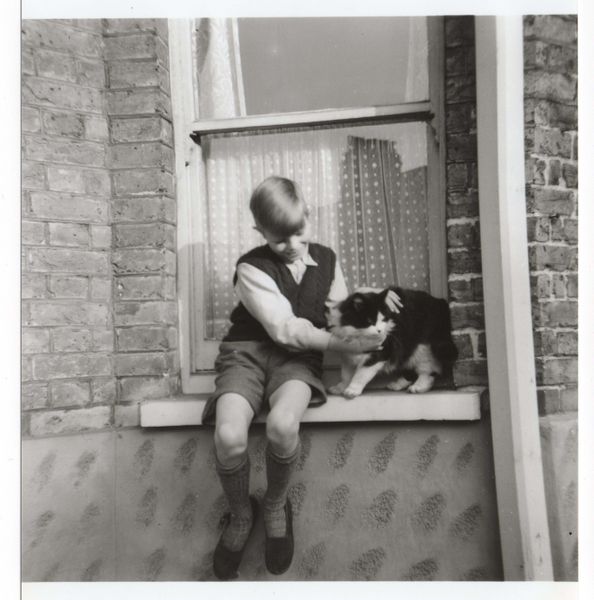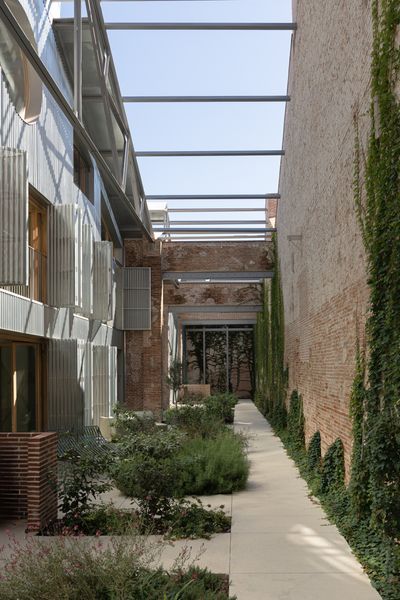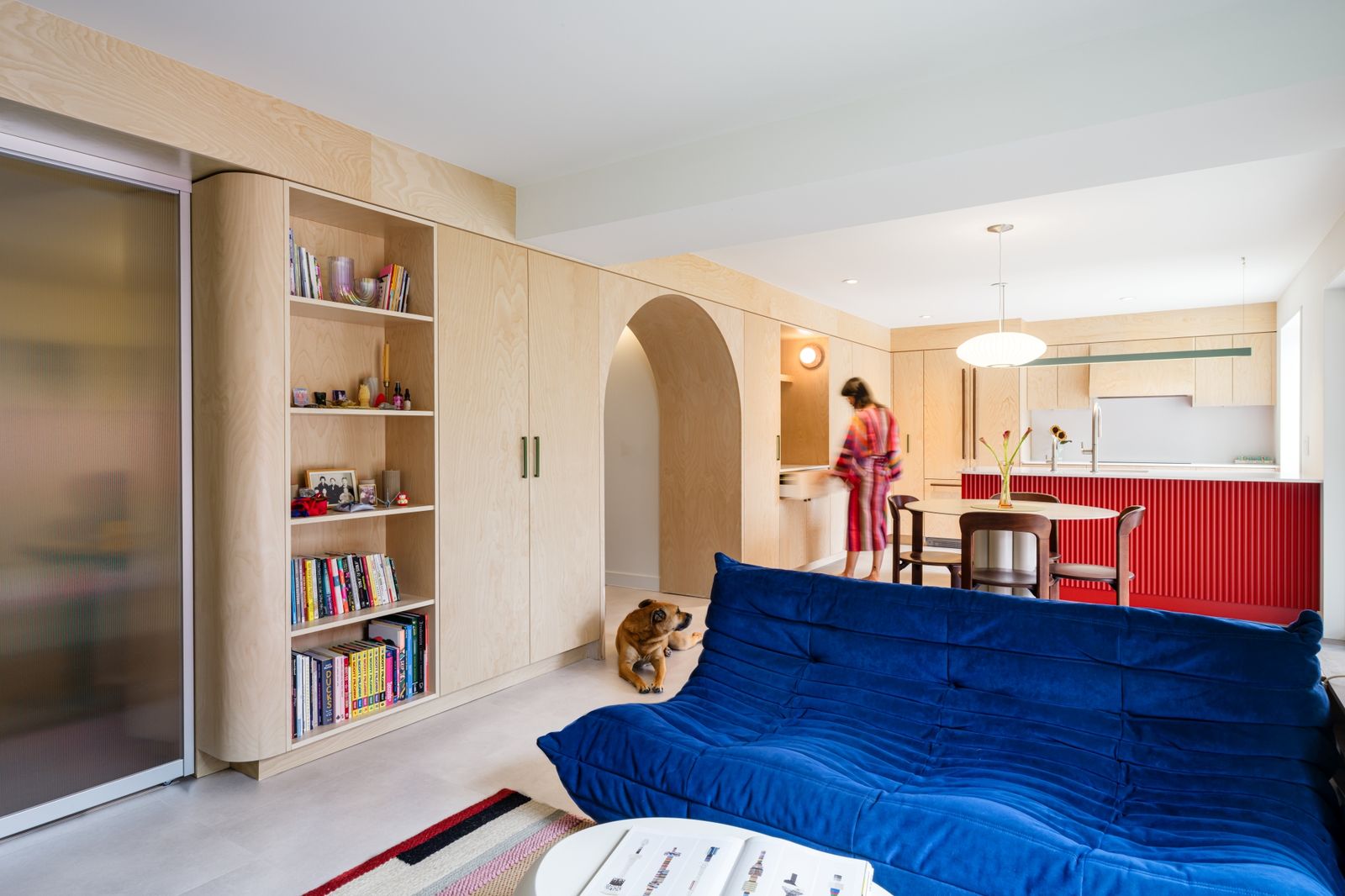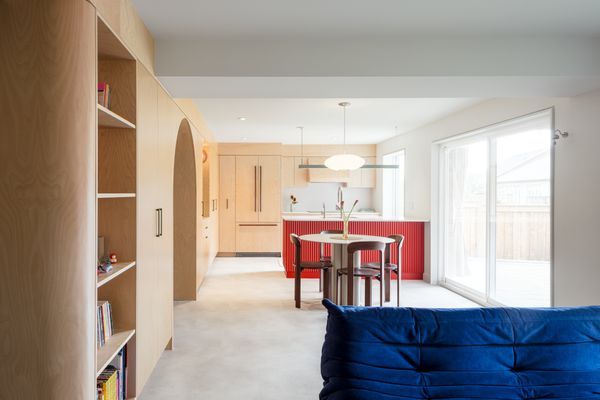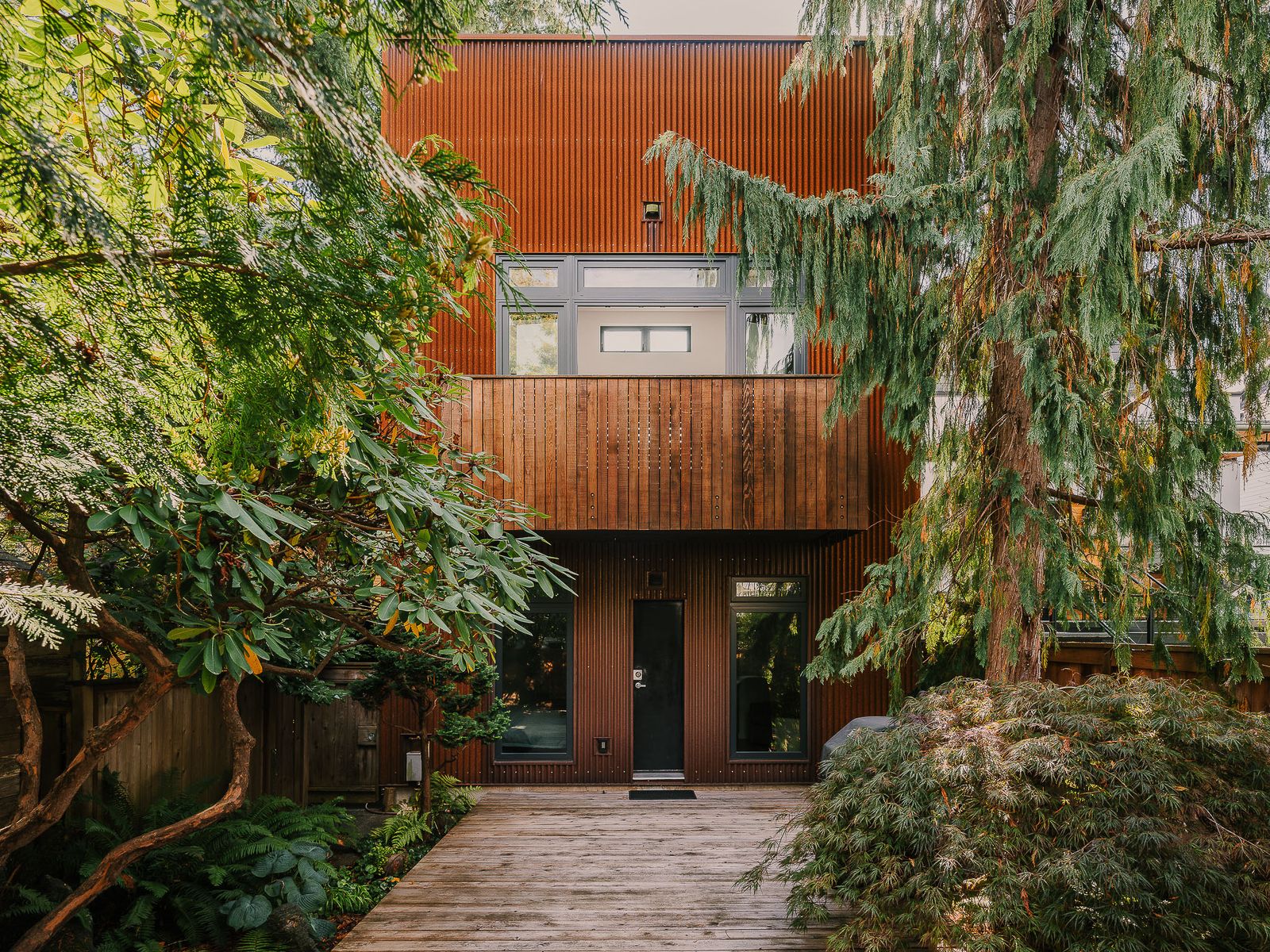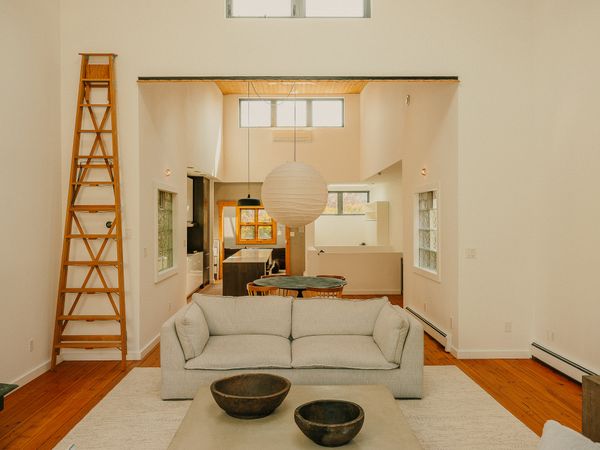They splashed out on a social kitchen, but used tricks of their respective trades to find thrifty solutions for punching up spaces and improving flow.

When they started looking to buy an apartment a few years ago, Brooklyn residents Graci Mills and Andrew Keck knew a space that required a renovation would help them get their dream home within their budget. "We wanted something that we could tear into pieces," Graci says. This led them to a dated two-bedroom railroad apartment in a pre-war building in Bed-Stuy. It became an exercise in updating a fairly typical plan into something more livable and distinct for about $175 per square foot.
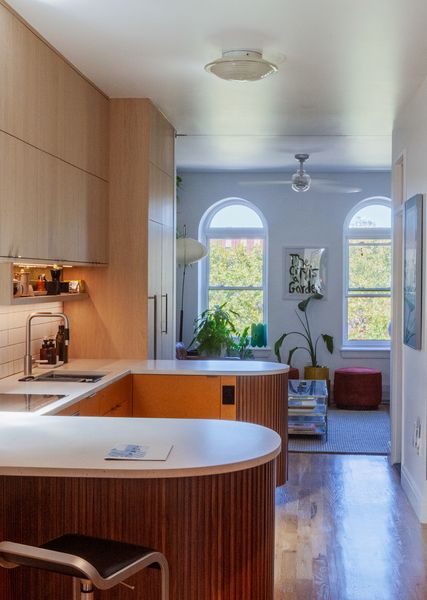
In the Bed-Stuy neighborhood of Brooklyn, Graci Mills, an architect and founder of Go Bang! Studio, and her partner Andrew Keck, an SNL prop master and founder of The Fabrication Shop, renovated a narrow and long two-bedroom apartment into a live-work space that balances privacy and openness.
Courtesy of Go Bang! Studio
The 725-square-foot apartment’s layout—a fourth-story, floor-through unit with bedrooms on either end and a dimly-lit kitchen and living area in the heart of the plan—is typical for older multifamily buildings in New York. While it was a generic space most recently renovated around 2010 with low-cost finishes, it had redeeming details including arched windows and nine-foot-tall ceilings plus its top-floor location with northern and southern exposures meant good natural light and cross ventilation.
The challenge for Graci, who is the founder of the architecture firm Go Bang! Studio, was making the whole space feel bright and cohesive without sacrificing privacy. What she didn’t want to do was turn it into a studio; walls were a must. "We needed the space to be super flexible for different uses, and that includes hosting, working from home, having an argument—whatever," she says. The apartment is around 45 feet long and Graci conceived of it as one continuous space that transitions from a public zone toward the street-facing side to private quarters in the back.
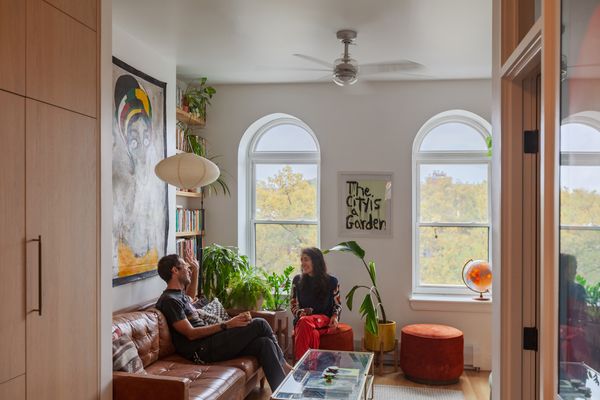
Located in a pre-war building, the floor-through unit had a fairly generic layout: two bedrooms on either end and a cloistered kitchen and living area in the center. "Everyone just wants to hang out by the windows," Graci says of these fairly common floor plans, noting that the center becomes dead space. She turned one of the bedrooms into this living room and office, removing a wall between it and the kitchen to create a free-flowing public area of the apartment.
Courtesy of Go Bang! Studio
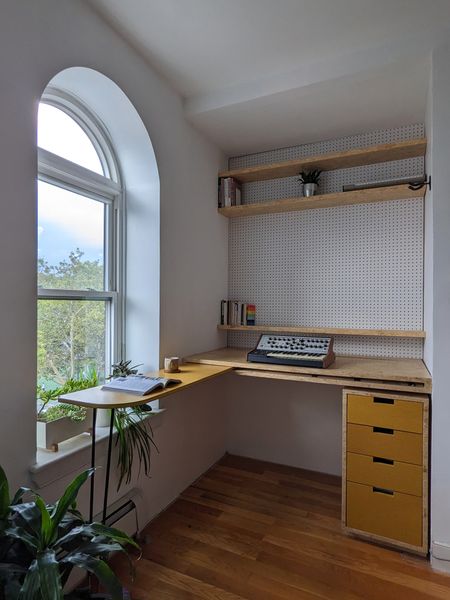
Graci works from home so she turned a former closet in the living room into an office. "I always get frustrated at how inefficient closets are," she says, noting how the very top of the space is difficult to access because doors are usually so much lower than the ceilings. Andrew designed and built a custom workstation for her, which takes advantage of the full width and height of the nook and has a surface that can be collapsed.
Courtesy of Go Bang! Studio
See the full story on Dwell.com: Budget Breakdown: How an "SNL" Prop Master and an Architect Refreshed Their Brooklyn Flat for $128K
Related stories:


